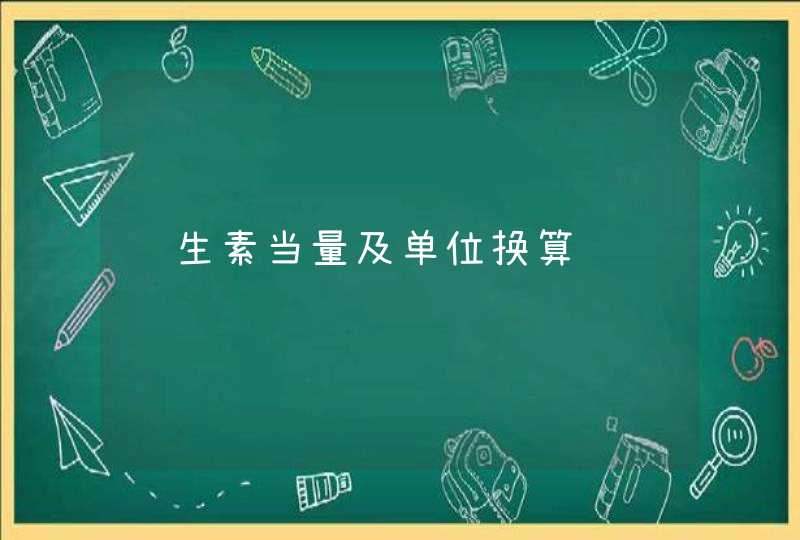
Vitamin A Technical Details:
Vitamin A is a fat-soluble vitamin. It is important for vision, bone growth and cell division.
Vitamin A consists of Retinol from animal sources, and Provitamin A Carotenoids from plant sources.
Retinol is referred to as pre-formed vitamin A. This means that it can be used directly by the body.
Provitamin A Carotenoids are Vitamin A precursors . This means that they are converted to Vitamin A by the body. However, conversion of the carotenoids is less efficient than that of retinol.
The Provitamin A Carotenoids are beta-carotene, alpha-carotene, beta-cryptoxanthin, lycopein, lutein and zeaxanthin (lutein and zeaxanthin are combined in the current database). The carotenoids are responsible for the red and yellow pigments of plants.
A unit called Retinol Activity Equivalents (RAE) is used to compare the Vitamin A activity of the different forms of Vitamin A. 1 µg (microgram) of retinol is equivalent to 1 µg RAE. However it takes 12 µg beta-carotene to equal 1 µg RAE, and 24 µg of the other carotenoids to equal 1 µg RAE. The following table summarizes the conversion of vitamin A values to RAE:
Historical Measures of Vitamin A
Previously, a unit called International Units (IU) was used to describe Vitamin A activity. However, at the time International Units for Vitamin A were defined (1989), it was thought that beta-carotene was half as concentrated as retinol (beta-carotene is now considered to be only 1/12 as concentrated as retinol).
Because of this, Vitamin A measurements expressed as IU tend to over-state the contribution of the provitamin A carotenoids. The following table summarizes the conversion of Vitamin A values to IU:
When it was determined that IU tended to overstate the contribution of the provitamin A carotenoids, a new unit called Retinol Equivalents (RE) was defined to describe the new values. At the time beta-carotene was thought to be 1/6 as concentrated as retinol. The following table describes the conversion of vitamin A values to RE:
In 2001, the National Academy of Sciences Institute of Medicine (NAS IOM) determined that Vitamin A activity from carotenoids is only half of what was previously believed. To account for this difference, and to avoid confusion, the new unit Retinol Activity Equivalents (RAE) was defined. Retinol Equivalents (RE) are no longer used.
The following table summarizes the relationship between the different measures:
IU Details
At the time of this writing (2004), the RDI (Reference Daily Intake) of Vitamin A is 5000 IU. However, IU is an inaccurate measure of vitamin A activity because it overstates the contributions of the provitamin A carotenoids (by a factor of 6). The FDA (US Food and Drug Administration) is considering changing the RDI to express it in terms of RAE.
Because the conversion of IU to RAE is different for retinol and the carotenoids, you cannot convert IU to RAE (or RAE to IU) for Total Vitamin A unless you know the proportion of retinol to carotenoids in the sample.
For example, knowing that you have 40 IU of Total Vitamin A is not enough information to determine how much retinol and carotenoids you have. 40 IU of Total Vitamin A can come from 12 µg RAE of retinol, or from 2 µg RAE of carotenoids, or from 6 µg RAE retinol plus 1 µg RAE carotenoids, or from many other combinations of retinol and carotenoids. The following table summarizes:
nutraCoster Details
Entering Retinol or Carotenoids Values
When you enter RAE for retinol or any of the carotenoids, nutraCoster automatically calculates the IU and %RDI values for the nutrient.
Finally, nutraCoster willrecalculate the IU and %RDI values of Total Vitamin A based on the new values for retinol and carotenoids.
Example: Suppose you have 80 µg RAE Total Vitamin A, which is composed of 60 µg RAE retinol and 20 µg RAE total carotenoids. The following table lists the values for the example:
Now change the Total Vitamin A RAE to 120 µg RAE. nutraCoster performs the following steps:
Total Vitamin A RAE was the sum of the retinol and carotenoids values, so nutraCoster increases retinol and carotenoids proportionally to 90µg RAE and 30 µg RAE.
The new value of 90 µg RAE for retinol converts to 300 IU and 6 %RDI.
The new value of 30 µg RAE for carotenoids converts to 600 IU and 12 %RDI.
Using the new IU and %RDI values, Total Vitamin A is now 900 IU and 18 %RDI.
The following table shows the results after the change:
nutraCoster performs a similar series of steps when you enter IU or %RDI values for Total Vitamin A.
CarotenoidDetails
When you enter or change a value for Total Carotenoids, nutraCoster checks to see if the Total Carotenoids value was equal to the sum of the individual Provitamin A Carotenoids before the change. If it was, nutraCoster recalculates the individual carotenoid values so the sum of the values equals the new Total Carotenoids value, while keeping the proportions the same.
When you enter or change a value for any of the individual carotenoids, nutraCoster checks to see if the Total Carotenoids value was equal to the sum of the individual Provitamin A Carotenoids before the change. If so, nutraCoster adjusts the Total Carotenoids value to equal the sum of the individual carotenoid values after the change.
为了统一计量膳食中的维生素A,而提出的一个概念。其含义是包括视黄醇和β-胡萝卜素在内的具有维生素A活性物质所相当的视黄醇量。
由于人体 维生素A 来源于动物性食物的维生素A和植物性食物中的 胡萝卜素 ( 维生素A原 ),而维生素A的常用计量单位为国际单位(IU),胡萝卜素的常用计量单位为μg(微克)或者mg(毫克),为了统一计量膳食中的维生素A, FAO /WHO(1967)提出了视黄醇当量(Retinol Equivalent, RE)概念。其含义是包括视黄醇和 β-胡萝卜素 在内的具有维生素A活性物质所相当的视黄醇量。
视黄醇当量、 维生素A 、 β-胡萝卜素 的换算关系如下:
1μg β-胡萝卜素=0.167μg视黄醇当量(理论上1分子β-胡萝卜素能形成2分子维生素A,但因为 胡萝卜素 的吸收率为1/3,而吸收后转化为维生素A的 转化率 又只有1/2,所以,1μg的胡萝卜素只能折算为0.556IU维生素A,即0.167μg视黄醇当量。1IU维生素A=0.3μg视黄醇当量)
晒太阳的多种好处·晒太阳能够帮助人体获得维生素d,这也是人体维生素d的主要来源。维生素d又叫“阳光维生素”,人体皮肤中所含的维生素d3源通过获取阳光中的紫外线来制造、转换成维生素d,它可以帮助人体摄取和吸收钙、磷,使小朋友的骨骼长得健壮结实。对婴儿软骨病、佝偻病有预防作用。对大人则有防止骨质疏松、类风湿性关节炎等功效。
·晒太阳能够预防皮肤病。皮肤适当的接受紫外线的照射,可以有效杀除皮肤上的细菌,增加皮肤的抵抗力。
·晒太阳还能够增强人体的免疫功能、增加吞噬细胞活力。阳光中的紫外线有很强的杀菌能力,一般细菌和某些病毒在阳光下晒半小时或数小时,就会被杀死。
·日光在调解人体生命节律以及心理方面也有一定的作用。晒太阳能够促进人体的血液循环、增强人体新陈代谢的能力、调节中枢神经,从而使人体感到舒展而舒适。
·阳光中的紫外线还可以刺激骨髓制造红血球,提高造血功能,从而防止贫血。
但是晒太阳也是有讲究的。在冬季由于臭氧层出现季节性薄弱,太阳光中的紫外线加强,易给人的身体带来不同的损伤。因此在冬季晒太阳也要注意科学选择时段。根据科学研究表明,在冬季,有三个时间段比较适合晒太阳:
·第一阶段为上午6-9时,这一时间段阳光以温暖柔和的红外线占上峰,紫外线相对薄弱。红外线温度较高,对人体主要起温热作用,可使身体发热,促进血液循环和新陈代谢,增强人体活力。
·第二、三阶段分别是上午9-10时,和下午4-5时,这两个时间段的照射特点是紫外线中的a光束成分较多,这时是储备体内“阳光维生素”——维生素d的大好时间;同时还可以促进肠道钙、磷的吸收,增强体质,有利于促进骨骼正常钙化。
温情提示:
晒太阳时最好穿红色服装,因为红色服装的辐射长波能迅速“吃”掉杀伤力很强的短波紫外线,最好不要穿黑色服装。
晒太阳时要注意摘掉帽子和手套,尽量将皮肤暴露在外,让阳光与皮肤亲密接触。
晒太阳若隔着玻璃窗,是达不到效果的。最好在户外,或宽敞的阳台
μg微克,质量单位,符号μg(英语:microgram)。
1微克等于一百万分之一克
1 微克 = 1000 奈克
1,000 微克 = 1毫克= 0.001克
1,000,000,000 微克 = 1千克
维生素D3通常的摄入量
常见的计量单位
属于微观单位
简明一点换算,
1克 = 100万 微克
1微克 = 1000 纳克
1千克 = 10亿 微克 =1万亿 纳克
欢迎分享,转载请注明来源:优选云

 微信扫一扫
微信扫一扫
 支付宝扫一扫
支付宝扫一扫
